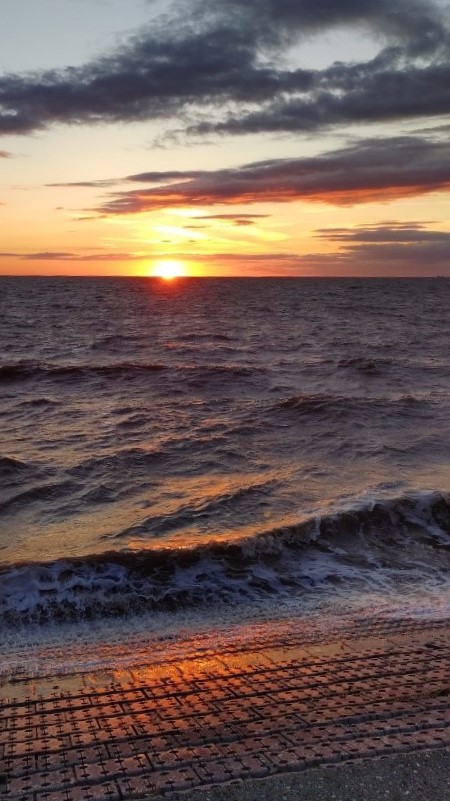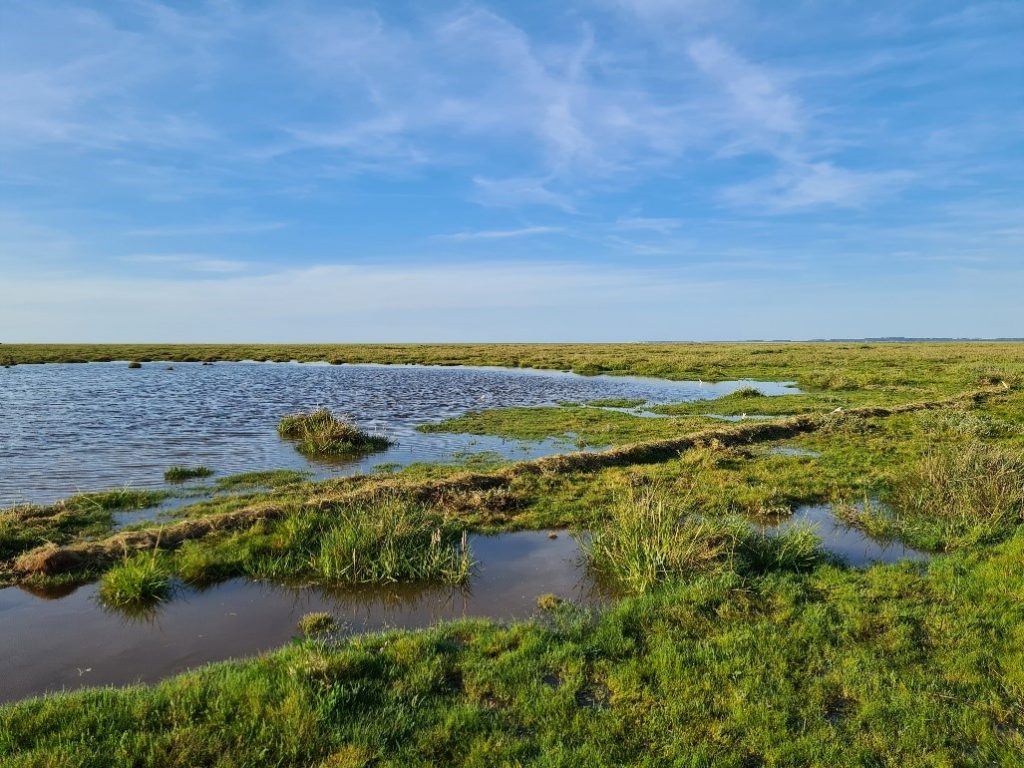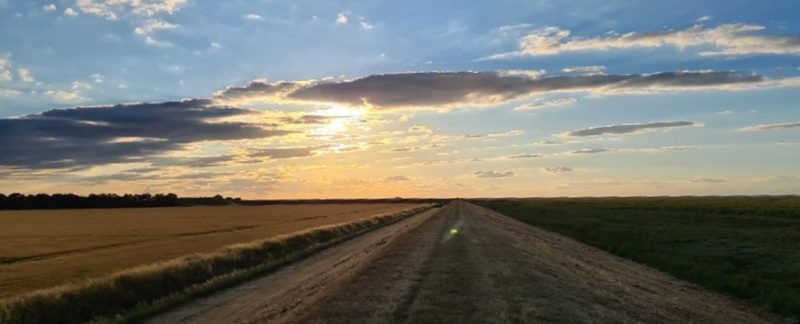Friday 15 July
Evening recces were carried out at:
Gedney (Nigel) – the marshes were flooded 45 mins before tide with around 100 Curlew over the marsh, around 100 Redshank on the tide edge and 200–300 Black-headed Gulls on the pool.
Beaches (Guy) – Heacham North North, no birds; Heacham South c. 2,000 Oystercatchers; Snettisham beach a few Ringed Plovers and Oystercatchers, but lots of Ringed Plover fencing all along the beach making it unusable for catching. Also noted at Snetts was a Turtle Dove calling and a Spoonbill flyover.

Terrington Marshes (Kirsty, Tim, Mario, later Nigel, Rob) – Walked in from Ongar Hill to see c. 800 Curlew, Redshank, 200+ Dunlin, Oystercatchers and other waders being harried along the tide edge by a Marsh Harrier. Pools were initially all dry, nothing came to them as the tide rose, until after high tide when a small amount came into the cannon-netting pool. Nothing catchable, the birds were along the creek edges.
So, not a lot to be excited about in terms of catching opportunities, but we were treated to a lovely sunset at both Heacham and Terrington!
Sat 16 July
There was no catching option for the morning, tide being lower than the previous evening, so we did recces and some colour-ring resighting. Early starters were Rob, Ian and Seb who, up at 4:30 hrs, went to read rings on the beaches before heading to the Pits. They arrived at Snettisham around 05:35 hrs and had a small observation window for reading flags / colour ring combinations. Turtle Doves were heard again. On to the Yacht Club where there was a flock of c50 Bar-tailed Godwit, then the pits which had c 2,000 Knot, 800 Oystercatchers, 400 Black-tailed Godwit, 150 Redshank and others. The marshes behind the pits also had birds: c 2,000 Bar-tailed Godwit and 1,000 Curlew. Eight individual Bar-tailed Godwit and 14 sightings of 12 individual Curlew were recorded.
The rest of us had lie-ins till 06:30 hrs, by which point Phil had arrived having driven through the wee small hours to join us, and recces were carried out as follows:
Wolferton (Tim, Nigel) – The marshes were covered in tall vegetation, and despite an initial flush of birds into the (initially dry then flooded) pool, no catching opportunities presented themselves. On the marsh were c. 100 Avocet, 2–3,000 Curlew and 2,000 Bar-tailed Godwit. There were an additional 100+ Curlew on the mist-netting pools towards the reserve end.
Gedney and Holbeach (Kirsty, Mario) – A quick stop-off at Gedney confirmed the marsh was already wet, with around 100 Curlew on the catching pool and not a lot of other movement. The Greenshank pool at Holbeach had four Common Sandpipers and an Oystercatcher family on it but was only half full of water. No other birds came to the pool over the high tide cycle. We also checked out the little causeway where we’ve caught before, but there were no birds there either. We met the sector’s new WeBS counter, Ian, who had seen 10 wader species along the frontage.
Terrington White Barn (Guy, Amelia, Phil) – the cannon-net pool had a little water in it on arrival, the other pools still dry. Lots of birds on the tide edge and then moved to the creek edges. Around 50 Redshank landed at the cannon net pool… briefly. The water did not start to come into the pools till after high tide, and by then there was also water on the E-pools.
Everyone was back at base for a hearty breakfast (except Kirsty forgot to cook the eggs!) at 12:00 hrs, and half an hour later Nigel, Kirsty, Guy and Mario went down to the White Barn to see if the marsh would provide a catching option. There was now a full cannon-net pool of water, and the decision was taken to try to catch on it.
The rest of Saturday was taken up by…
Guy and Kirsty organising catching and processing kit, which everyone helped load into cars and the trailer, Jacquie overseeing preparation and packing up of dinner for the sea wall, sleep where needed and generally keeping out of the sun.
We set a line of two small-mesh half-nets along the remnants of the old cannon net wall, loading the cannons on site so as to not blow the seals as the bases would be under water. It was a glorious afternoon, and much training was done on the kit, especially for those who had never been before. Two jigglers were used – one as normal in safety, and one at 90 degrees to it to persuade any birds in off that edge. All tested well, the cows kept away, and a most delicious dinner of roasted vegetable tacos with mango salsa was enjoyed by everyone behind the sea wall. The nets were then manned – Nigel in the hide, basecamp team under camo as it was too hot to go under cover material, and Jacquie on the sea wall keeping the cows away. We were lulled into a soporific state not by the sound of birds overhead, but by the thump thump thump of dance music somewhere… We knew it was an optimistic set as the evening tide was to be so much lower, and that proved to be the case. We called time just before high tide as nothing had shown an interest in the pool, and headed back to the OSH for a bit of social time and then sleep.

Sun 17 July
Up at 6:30 hrs to be in position by 7:45 hrs. Kirsty stayed on the sea wall this time. Not long after everyone settled, three Redshank came and landed on the pool – an auspicious start we thought. Unfortunately, they were the only waders that paid a visit, and there were noticeably fewer birds around in general. Lots of gulls, but the four Marsh Harriers that insisted on landing near basecamp and the catching site, or circling in a tower above it, put off even the flocks of Curlew further down the marsh. By the time we abandoned the catch, despite suggestions that a catch of a butterfly and two Little Egrets might be welcome, the heat haze was such that even large gulls on the tide edge were indistinct, Nigel was in what he called a ‘skirt’ hide – he’d lifted all the edges up to try to get some relief from the heat, and base camp people were lightly broiled! The set was quickly dismantled – Nigel would find out later that we had a faulty fuse (which by virtue of how it was faulty still allowed the circuit to test fine) – and we decamped back to base. Breakfast (with eggs this time!) ably overseen by Katharine, kit put away, new decoy store moved into the garage and the house and annex cleaned before we all headed off by mid-afternoon.
Carole and Bernard had picked up a pop-up hide from Terrington and were trying it out on Wolferton to see what the resighting opportunities would be like there. It was not a very successful experience for them – the birds were too far out initially, then there was too much of a heat haze to read flags, then birds lifted and did not come back to the marsh- and there was no water in the pool where they’d positioned themselves. They did manage to read five Bar-tailed Godwit flags and one Avocet flag before the haze got too bad on the outgoing tide.
Colour rings and flag sightings
We saw eight individual Bar-tailed Godwit and recorded 14 sightings of 12 individual Curlew during the weekend.
Bernard and Carole were able to return on the Monday and were MUCH more successful with the hide on the edge of the marsh. They had 31 sightings of 28 individual Bar-tailed Godwit and 81 sightings of 66 individual Curlew. The minimum threshold for survival modelling analyses is 50 re-encountered birds: it is incredibly helpful to obtain this data right at the start of the season, in particular to contribute to analyses to investigate e.g. the impact of avian influenza over the coming year.
A total of three headstarted Curlew, plus one from the PhD project in the Brecks were seen. Curlew 3V was released as a chick at Sandringham on 27 Jul 2021 from the third cohort of captive reared birds, and Curlew 6P was released as a chick at Sandringham on 10 Aug 2021, part of the sixth cohort. Neither of these had been tagged, nor had they been seen since, so these are particularly valuable resightings by Carole and Bernard.
Of the non-WWRG ringed birds seen, two Bar-tailed Godwit were from Norway and three from The Netherlands. One of the Norwegian birds was ringed in Porsanger in 2010 and seen later the same year at Holme but no further sightings until this one. The Dunlin was from mid-Wales, the Redshanks from the Humber, two Knot from NW England and one from Iceland, and the Oystercatchers were from Norway and The Netherlands, and the Avocets from Lancaster.
Colour-mark Resighting Totals
| Species | Total Sightings | Individuals | WWRG | Non-WWRG |
| Bar-tailed Godwit | 31 | 28 | 23 | 5 |
| Curlew | 81 | 66 | 62 | 4 |
| Black-tailed Godwit | 10 | 8 | 2 | 8 |
| Dunlin | 1 | 1 | 1 | |
| Redshank | 2 | 2 | 2 | |
| Knot | 3 | 3 | 3 | |
| Oystercatcher | 2 | 2 | 2 | |
| Avocet | 2 | 2 | 2 | |
| Mediterranean gull | 1 | 1 | 1 | |
| Total | 133 | 113 | 87 | 28 |
Thanks to Kirsty Turner for writing this report.

